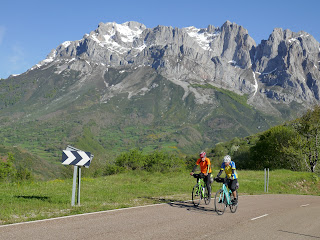E-bikes have been around for years, but really established themselves about a decade ago, with the happy combination of a reasonable regulatory framework that set the rules for their use, and the availability of lithium-ion batteries, which made them a practical proposition.
The rules for e-bikes in the UK, and across much of Europe, are that the bike should have a motor with a maximum power of 250 watts; that the motor should be controlled by the pedals, not by a separate throttle, and that motor assistance should cease at a speed of 15.5 mph.
These rules led to the creation of the urban e-bikes that we all know, generally a hefty utility bike with a bottom-bracket motor system and a large battery. They are hugely popular in European cities where utility cycling was already widespread, and have never been of much interest to the more sporting cyclist, despite efforts by their manufacturers to introduce 'sports' models. The motor systems for these bikes are made, for the most part, by Bosch, Shimano and Yamaha, and are sophisticated and robust - so much so that they have been widely adopted in the parallel universe of mountain biking. As an aside, mountain bikers have always been early adopters of bicycle technologies, and this is no different.
About two years ago 'e-road' bikes began to appear, enabled by the Ebikemotion system, invented in Spain but now bought by a German company. The breakthrough here was the realisation that a less powerful motor, with a smaller battery, would be lighter and would enable products that would be attractive to cyclists who wanted to make some effort themselves, but had got to the stage where they appreciated a bit of help, particularly on the hills.
Bikes using this system are made by Bianchi, Colnago, Orbea, Pinarello, Ribble, Wilier and many others, and are typically fast road or race bikes very similar to non-electric versions from the same manufacturer. I have one of these, made by Orbea, and you need to look at least twice to see that it is motor assisted.
I have ridden this bike with the A Group all summer, and it has been a delight. Typically, the A Group maintains a pace of between 17 and 18 mph on the flat, and between 20 and 30 mph downhill. At these speeds the motor is doing no work, but the bike is light enough to hold the pace easily. However, when the road tilts up and the pace drops back to 16, then 15 mph, the motor smoothly begins to help and the bike climbs strongly. It is possible to vary the amount of power assistance provided, and I have set mine at a low level, but it climbs very well with this. Putting some numbers on it, I can (still) climb at about 200 watts; the motor will add another 100 watts to this (indeed it is capable of adding another 250 watts, if I were to let it), putting me firmly in pro-cyclist territory. I have never been there before, and I quite like it.
Ridden in this way, in our part of the country, the bike has a range of between 100 and 120 miles. A lot of climbing - such as in the Alps - would bring this down, but there is a 'range extender'. It's another battery that fits in the bottle cage and doubles the range, so a long, hard Alpine day would be no problem.
But, as it's summer, I also enjoy gravel riding. The Orbea is a bit lightweight for that, so I bought an 'e-gravel' bike to go with it. After all, if 'e-road' is a thing, can 'e-gravel' be far behind? The bike is a Boardman which I got in Halfords, and it has a German 'Fazua' motor system, which is a bit more powerful and a bit heavier than the Ebikemotion. Like all of the Boardman bikes I have had, this one is well specced, well put together and fairly priced. Similar bikes are to be had from Cairn, Cube, Focus, KTM, Look, Pinarello, Whyte and a number of others.
I've done some good rides with it; on the South Downs, Rochester to Dover on the Pilgrims Way and a number of others. It works very well, but e-gravel is very different from e-road, in that the speed tends to be lower and the battery use higher, as you spend much more time below the 15.5 mph cut-off speed. Riding on the Downs I get 50 miles or less with this system, depending on the terrain. Fifty miles is quite a decent ride on gravel, and, happily, a spare Fazua battery is small - about the size and weight of a water bottle. Obviously, two batteries give you a hundred gravel miles, or more on the road. Plenty for me.
Problems? Nope. So far, everything has worked as it should. The bikes are straightforward modern designs, with hydraulic disc brakes, tubeless tyres and good wheels. The Orbea is Ultegra and the Boardman is SRAM 1x, classic gravel stuff. The Orbea weighs 11.5 kilos and the Boardman 15.5. Neither is a heavy bike and either can easily be ridden with the motor turned off.
So, in conclusion, lightweight e-bikes are here and work well. No doubt we will see a steady stream of improvements over the next few years, some of which work better than others. But my experience of Ebikemotion and Fazua has been very satisfactory this summer, with most of my miles being e-assisted.
I am getting old, but it doesn't feel like it!
Mark

















































